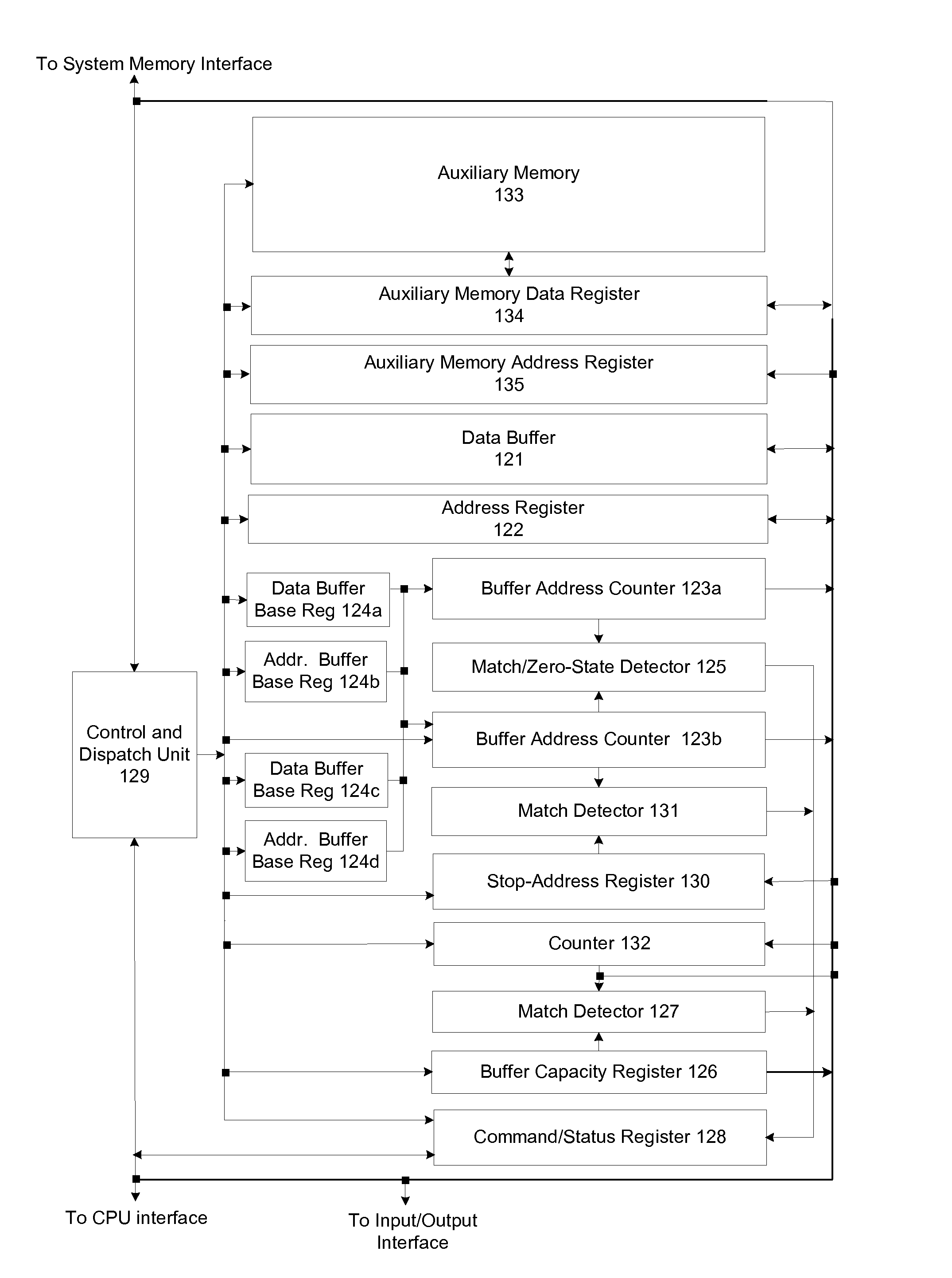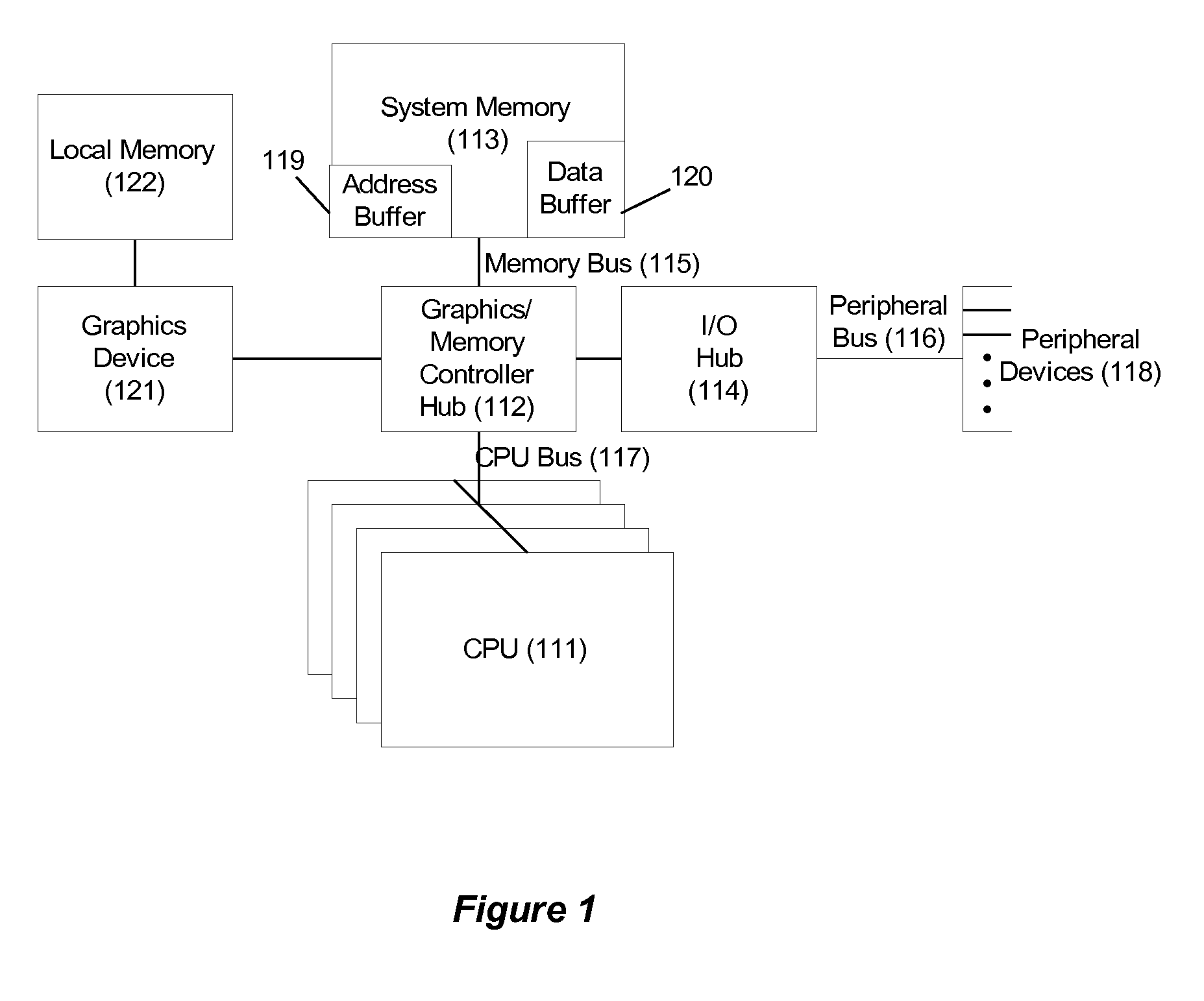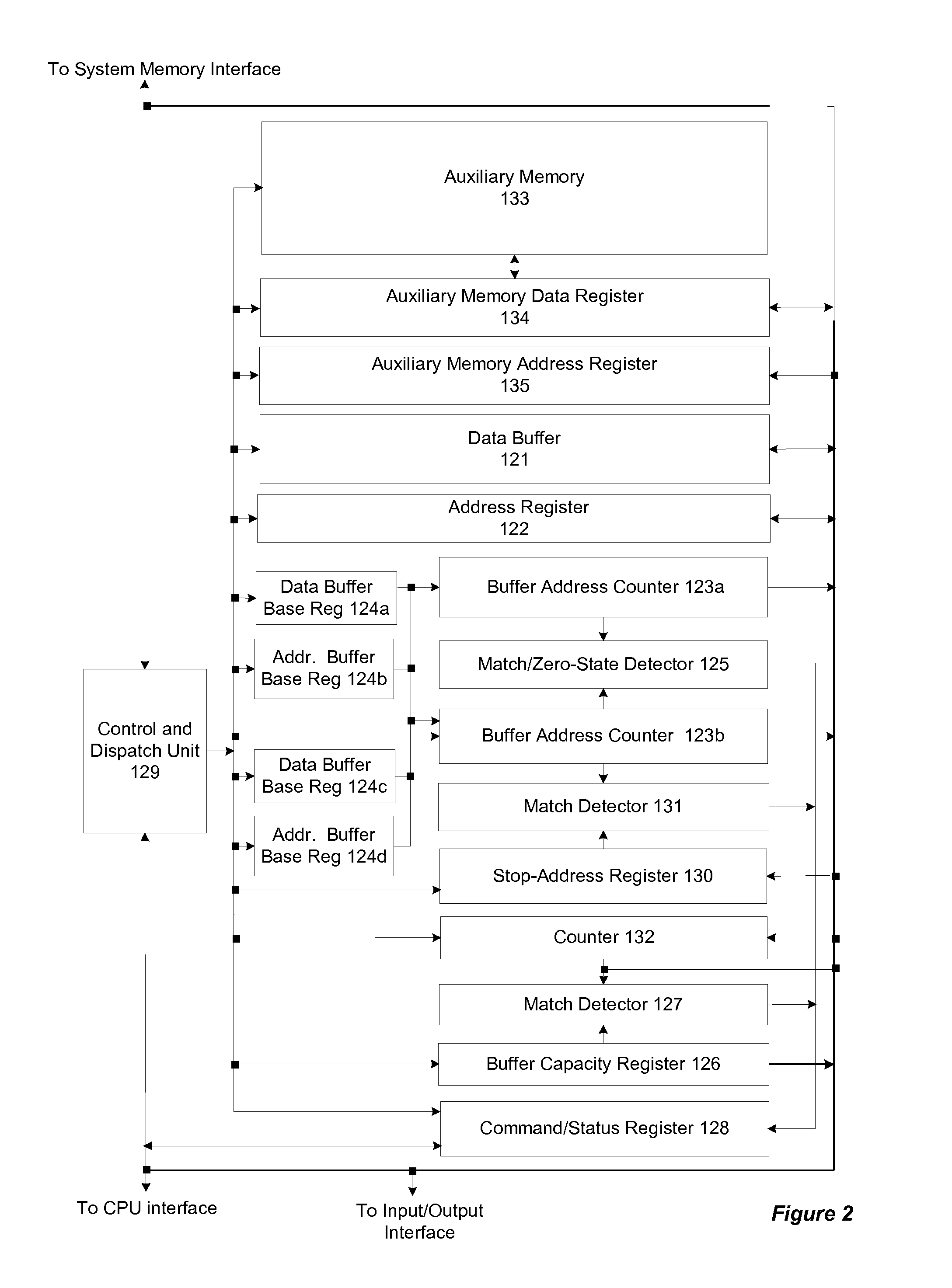Memory-controller-embedded apparatus and procedure for achieving system-directed checkpointing without operating-system kernel support
a memory controller and operating system technology, applied in the direction of safety arrangments, process and machine control, instruments, etc., can solve the problems of virtually impossible for such systems to remain competitive in an era of fast advancing state-of-the-art commodity computers, and specialized plug-in hardware components
- Summary
- Abstract
- Description
- Claims
- Application Information
AI Technical Summary
Benefits of technology
Problems solved by technology
Method used
Image
Examples
Embodiment Construction
[0026]Several embodiments of the invention are described. All of these embodiments can be implemented with a relatively modest increment to the logic normally found in the memory control section a standard computer. This portion of a computer is typically integrated into a single unit variously called the memory control unit or the memory controller hub. It is sometimes also integrated with a graphics control unit and called the graphics / memory controller hub. In the following discussion, the term “memory controller hub” or the abbreviation “MCH” will be used in reference to this computer element.
[0027]All embodiments of the invention can be implemented with the same augmented memory controller hub since the required additional logic elements are similar for each of them. The different embodiments will be described separately, however, since none of them requires the full complement of incremental logic. All of the required logic elements can be easily implemented using standard pro...
PUM
 Login to View More
Login to View More Abstract
Description
Claims
Application Information
 Login to View More
Login to View More - R&D
- Intellectual Property
- Life Sciences
- Materials
- Tech Scout
- Unparalleled Data Quality
- Higher Quality Content
- 60% Fewer Hallucinations
Browse by: Latest US Patents, China's latest patents, Technical Efficacy Thesaurus, Application Domain, Technology Topic, Popular Technical Reports.
© 2025 PatSnap. All rights reserved.Legal|Privacy policy|Modern Slavery Act Transparency Statement|Sitemap|About US| Contact US: help@patsnap.com



